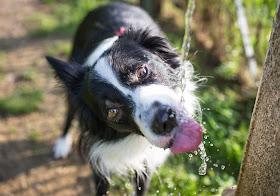If you’re looking to communicate with your cat, you can likely tell how they’re feeling based on their body language. While most cats speak through body postures, there are a few breeds known for being quite chatty. Instead of just meowing and purring, these cats love to talk out loud through chirping and sometimes even yowling. If you’re looking for a companion who loves to talk back, check out these talkative cat breeds.
Why people love talkative cat breeds
Before we dive into which breeds are the most talkative, a lot of people wonder why people love talkative cat breeds. The answer is simple, outside of enjoying a little banter, a kitten that chats back can help curve loneliness. It is also great for owners who want to learn their cat’s behavior quicker. When you pay attention to those chatty clues and body language habits, it’s easier to understand your kitten. If you want your cat to talk a bit more, encourage it to do so. Similar to dogs, you can train cats and with a little positive reinforcement you’ll enjoy chats for years to come.
Siamese
Siamese cats are well-known for their chatty habits. Full grown Siamese cats grow to be around 10-12 pounds and will tell you when they’re hungry or need cuddles. These are social cats and love companionship, so it won’t take long for you to hear their purrs, meows and cries for attention. These cats are also quite popular, and you may just recognize them from famous animated movies like The Aristocats and Lady and the Tramp.
Bengal
Some cats are more curious than others and the Bengal fits perfectly in that description. These courageous and daring cats are beautiful with fur that resembles leopards, jaguars, and ocelots. Their strong, athletic bodies may have something to do with the bravery and playfulness you’ll find with your Bengal cat. These kittens are playful and talkative from a young age, making them great pets!
Tonkinese
Tonkinese cats are known for their striking features and beautiful eyes. While they may gain a lot of recognition for their looks, it’s their personality that makes people fall in love. These cats are a hybrid between Siamese cats and Burmese cats, so it makes sense they take after the talkative Siamese breed. The cats have a ton of energy and therefore love to play around and talk while doing so. Because they’re so friendly, these cats make great pets for families with small children and cat-friendly dogs.
American Bobtail
Last, but certainly not least, we can’t mention talkative cat breeds without bringing up the American Bobtail breed. These cats have dog-like personalities and love to play games like fetch and hide-and-seek. Because they’re social and easygoing like many dogs, it’s natural for them to be chatty.
If you’re looking to add a cat to the family, the AVMA suggests you bring your kitten home when it is between 7 and 9 weeks old. When your new furry friend joins the family, make sure to schedule an appointment with your veterinarian. Scheduling appropriate vaccinations can help ensure your cat is protected from diseases and healthy from the start. If you’re ready to schedule an appointment today, reach out to our team at the Bregman Veterinary Group today. We can’t wait to meet your new feline best friend!









